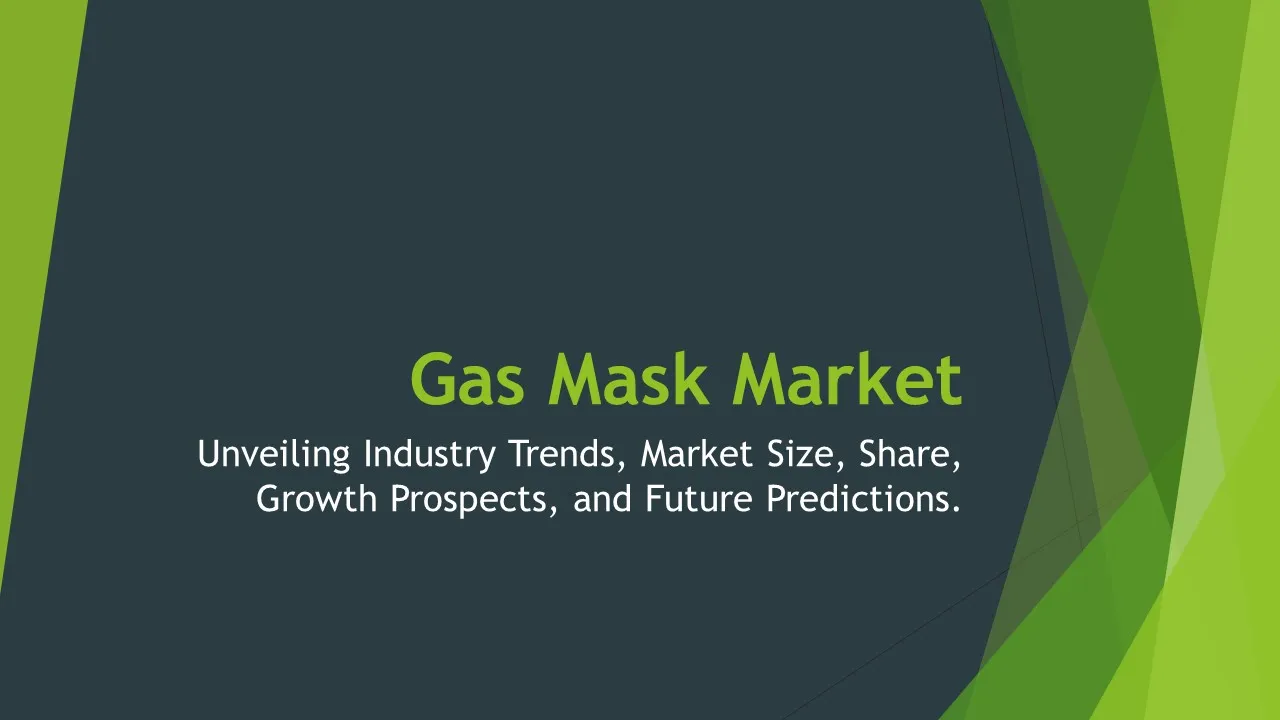Personal Protective Equipment PPE Sales
Personal Protective Equipment (PPE) Market Segments - by Product Type (Head Protection, Eye & Face Protection, Hearing Protection, Protective Clothing, Respiratory Protection), Application (Construction, Manufacturing, Healthcare, Oil & Gas, Mining), Distribution Channel (Online Stores, Specialty Stores, Direct Sales, Distributors), Material Type (Plastic, Metal, Rubber, Leather, Others), and Region (North America, Europe, Asia Pacific, Latin America, Middle East & Africa) - Global Industry Analysis, Growth, Share, Size, Trends, and Forecast 2025-2035
- Report Preview
- Table Of Content
- Segments
- Methodology
Personal Protective Equipment PPE Sales Market Outlook
The global Personal Protective Equipment (PPE) market is projected to reach approximately USD 93 billion by 2035, with a compound annual growth rate (CAGR) of around 6.5% from 2025 to 2035. The escalating need for safety equipment due to rising workplace hazards and stringent regulatory standards is a major driving force behind this growth. Additionally, increasing awareness of occupational safety and health, accelerated by the COVID-19 pandemic, has significantly boosted the demand for various PPE products. The expansion of sectors such as construction, healthcare, and manufacturing further adds to the market's potential, as more industries recognize the importance of protecting their workforce. Also, technological advancements in PPE manufacturing, such as the development of smart protective gear, are set to open new avenues for growth and innovation within this market.
Growth Factor of the Market
Several growth factors are propelling the Personal Protective Equipment (PPE) market forward. Firstly, the increasing incidence of workplace injuries and fatalities has led to stricter regulations and compliance requirements from governments and health organizations, mandating employers to invest in adequate PPE for their workers. Secondly, the COVID-19 pandemic has heightened public awareness regarding personal safety and hygiene, creating a substantial surge in demand for PPE in various sectors, notably in healthcare and essential services. Thirdly, advancements in materials science have resulted in the development of more comfortable, durable, and effective PPE products, which are more appealing to end-users. Additionally, the global push towards enhancing worker safety in emerging economies is creating new market opportunities. Finally, the rise of the gig economy and non-traditional work arrangements has increased the diversity of jobs requiring PPE, expanding the overall market reach and product offerings.
Key Highlights of the Market
- The PPE market is projected to reach USD 93 billion by 2035.
- Growth is primarily driven by increased regulatory compliance and workplace safety awareness.
- The healthcare sector is one of the fastest-growing applications for PPE.
- Technological advancements are leading to the development of innovative PPE solutions.
- Emerging economies are becoming significant markets for PPE due to rising industrialization.
By Product Type
Head Protection :
Head protection gear is a critical segment within the PPE market, primarily including hard hats, helmets, and bump caps used across various industries such as construction, manufacturing, and mining. These products are designed to shield workers from falling objects, electrical hazards, and environmental conditions. The demand for head protection is driven by stringent safety regulations aimed at minimizing workplace injuries. Furthermore, advancements in design and technology have led to the creation of helmets that are lighter, more comfortable, and equipped with communication tools, enhancing their functionality. As construction activities continue to rise globally, so does the importance of head protection in ensuring worker safety, hence, making it a significant focus area for manufacturers and regulatory bodies alike.
Eye & Face Protection :
Eye and face protection is another vital segment encompassing safety goggles, face shields, and safety glasses that protect against chemical splashes, flying debris, and harmful radiation. The increasing prevalence of workplace accidents in industries like construction, manufacturing, and healthcare drives the demand for these protective devices. Regulatory mandates necessitating eye protection in many sectors further bolster this market segment. Innovations such as anti-fog coatings, adjustable face shields, and designs that enhance comfort and visibility are attracting more users. The expanding healthcare sector, particularly in response to the COVID-19 pandemic, has also contributed significantly to the growth of eye and face protection products, as the need for safeguarding against pathogens and contaminants continues to be paramount.
Hearing Protection :
Hearing protection, which includes earplugs, earmuffs, and noise-cancelling headphones, is essential for workers exposed to high noise levels, particularly in construction, manufacturing, and oil & gas sectors. Chronic exposure to loud environments can lead to irreversible hearing damage, making these products crucial for occupational health. Growing awareness about the risks associated with noise pollution and strict enforcement of noise control regulations are driving the demand for hearing protection solutions. Additionally, advancements in technology have led to more comfortable and effective designs that appeal to users. As industries continue to prioritize hearing conservation programs, the market for hearing protection is expected to witness consistent growth.
Protective Clothing :
Protective clothing encompasses a wide range of garments, such as coveralls, vests, and gowns designed to protect employees from various workplace hazards, including chemicals, heat, and biohazards. This segment is experiencing significant growth due to the increasing emphasis on worker safety regulations across different industries. For example, the healthcare sector requires specialized gowns and coveralls to protect against infectious diseases, while the construction industry demands durable and high-visibility clothing. Innovations in fabric technology, including moisture-wicking and flame-resistant materials, enhance the functionality and comfort of protective clothing, making them more appealing to end-users. As industries expand and regulations tighten, the demand for protective clothing is anticipated to rise, ensuring continued market growth.
Respiratory Protection :
Respiratory protection devices, which include masks, respirators, and self-contained breathing apparatus, are essential in safeguarding workers from airborne contaminants and hazardous materials. Industries such as construction, mining, and healthcare particularly emphasize respiratory protection due to the high risk of exposure to harmful substances. The COVID-19 pandemic has also significantly increased the demand for respiratory protection solutions, as public health measures necessitated widespread mask usage. The development of advanced filtration technologies and comfortable designs has made these products more effective and user-friendly. Furthermore, regulatory requirements regarding air quality and occupational safety are driving the market, ensuring that respiratory protection remains a critical focus for manufacturers and safety professionals alike.
By Application
Construction :
The construction sector is a major application area for PPE, necessitating a wide array of protective gear to ensure worker safety on job sites. From hard hats and harnesses to high-visibility clothing and safety boots, the demand for PPE in construction is driven by the inherent risks associated with construction activities, including falls, equipment-related injuries, and exposure to hazardous materials. With ongoing construction booms in various regions and increasing regulatory scrutiny, the market for construction-related PPE is expected to witness steady growth. Additionally, the adoption of advanced technologies, such as smart helmets with integrated communication tools, is enhancing safety measures and is likely to further stimulate demand in this segment.
Manufacturing :
The manufacturing industry is another significant application for PPE, where workers face various risks ranging from chemical exposure to heavy machinery hazards. Protective gloves, goggles, and hearing protection devices are commonly used to mitigate these risks. As the manufacturing sector evolves with automation and advanced machinery, the need for PPE that meets stringent safety standards becomes even more critical. The growing emphasis on workplace safety and employee health, along with regulatory mandates, is driving manufacturers to invest more heavily in PPE solutions. Moreover, innovations in materials that provide better protection without compromising comfort and dexterity are expected to further boost the demand for PPE in manufacturing.
Healthcare :
In the healthcare sector, PPE plays a critical role in protecting medical personnel and patients from infections and contaminants. The COVID-19 pandemic has dramatically increased the importance of PPE in healthcare settings, with a surge in demand for surgical masks, gloves, face shields, and protective gowns. Regulatory bodies have enforced strict guidelines to ensure that healthcare workers are adequately protected, further driving the demand for high-quality PPE. The industry's focus on infection control and patient safety is expected to sustain growth in this segment. Additionally, ongoing advancements in PPE materials and designs, including antimicrobial properties and enhanced breathability, are likely to improve compliance and user satisfaction in healthcare applications.
Oil & Gas :
The oil and gas industry is characterized by hazardous working environments, necessitating comprehensive PPE to protect workers from a variety of risks, including chemical exposure, thermal hazards, and mechanical injuries. PPE used in this sector includes flame-resistant clothing, hard hats, and specialized respiratory protection equipment. The growing global energy demand and expansion of exploration activities are driving significant investments in safety measures, thereby boosting the PPE market in this application. Moreover, strict regulations and safety standards in the oil and gas sector compel companies to prioritize worker safety, leading to increased consumption of protective gear. As the industry evolves, the focus on innovative and multifunctional PPE solutions is expected to grow, further enhancing market opportunities.
Mining :
In the mining industry, PPE is essential for protecting workers from various hazards, including falling objects, toxic gases, and extreme environmental conditions. Equipment such as helmets, gloves, and respiratory protection are critical for ensuring safety in this high-risk sector. The ongoing demand for minerals and natural resources drives mining operations globally, which in turn fuels the need for effective PPE. Safety regulations and compliance requirements are becoming increasingly stringent, further bolstering the market for PPE in mining. Additionally, advances in technology, such as wearable sensors integrated into protective gear, are being explored to enhance worker safety and operational efficiency, presenting new growth avenues in this segment.
By Distribution Channel
Online Stores :
The online distribution channel for PPE has gained significant traction in recent years, with an increasing number of consumers preferring the convenience and accessibility of purchasing safety equipment online. E-commerce platforms provide a wide range of options for buyers, allowing them to compare prices, read reviews, and access product specifications easily. The COVID-19 pandemic accelerated the shift towards online shopping, and this trend is expected to continue as consumers become accustomed to digital purchasing habits. Additionally, online retailers often offer discounts and promotions, making it an attractive channel for budget-conscious buyers. As logistics and delivery services improve, the online distribution of PPE is poised for robust growth.
Specialty Stores :
Specialty stores dedicated to safety equipment play a crucial role in the PPE distribution landscape. These stores offer a curated selection of protective gear tailored to specific industries, providing customers with expert advice and specialized products. The advantage of shopping in specialty stores lies in the personalized customer service, where trained personnel can guide users in selecting the appropriate PPE for their specific needs. Furthermore, these stores often carry high-quality and industry-compliant products that might not be available through general retail channels. As industries continue to prioritize safety and compliance, specialty stores are likely to remain a key distribution channel for PPE.
Direct Sales :
Direct sales are an essential distribution method for PPE, particularly for companies that require bulk orders or customized protective equipment. Many manufacturers engage in direct sales to build stronger relationships with their clients and ensure that they receive the necessary training and support for their products. This channel is particularly effective in industries such as construction and manufacturing, where businesses often need tailored solutions to meet their specific safety standards. Additionally, direct sales enable manufacturers to offer competitive pricing and maintain better control over their product quality and distribution. As industries continue to evolve, the demand for personalized service and direct interactions between manufacturers and consumers is expected to grow in the PPE market.
Distributors :
Distributors are a vital part of the PPE supply chain, acting as intermediaries between manufacturers and end-users. They maintain a vast inventory of various PPE products from multiple manufacturers, ensuring that customers have access to a diverse range of options. Distributors play a crucial role in facilitating quick deliveries and providing essential product information to buyers. They often work closely with businesses to assess their specific safety needs and recommend appropriate PPE solutions. The increasing focus on workplace safety and the need for compliance with regulations are driving the demand for distributors in the PPE market. Furthermore, as industries expand globally, the role of distributors in managing logistics and ensuring timely supply becomes increasingly important.
By Material Type
Plastic :
Plastic is one of the most commonly used materials in the production of PPE due to its versatility, lightweight nature, and cost-effectiveness. Products such as safety goggles, face shields, and protective clothing often utilize various types of plastics, providing excellent protection against chemical splashes, impacts, and other hazards. The adaptability of plastic materials allows manufacturers to create designs that meet specific safety standards while ensuring comfort and usability for the wearer. Additionally, the continuous advancement in plastic technology is leading to the development of more durable and effective protective gear. The rising demand for affordable yet reliable PPE solutions across various industries is expected to drive the growth of plastic-based protective equipment.
Metal :
Metal is a critical material used in certain PPE products, particularly those requiring durability and resistance to heat and impact. For example, metal safety helmets and protective equipment for welding and heavy machinery operations are essential for safeguarding workers in hazardous environments. The use of metal in PPE is driven by its strength and ability to withstand extreme conditions. However, the market for metal-based PPE is relatively niche compared to other materials, primarily due to weight considerations and comfort factors. Manufacturers are focusing on integrating metal components into lightweight designs to enhance usability while maintaining safety standards. As industries such as construction and manufacturing continue to grow, the demand for metal-based PPE is expected to remain stable.
Rubber :
Rubber is widely used in the production of PPE, particularly in gloves, boots, and protective clothing designed to protect against chemicals, moisture, and other hazardous substances. Rubber gloves are particularly vital in industries such as healthcare and food processing, where hand protection is essential for maintaining hygiene and safety. The elasticity and durability of rubber make it an ideal choice for protective gear that requires flexibility and resistance to wear and tear. Innovations in rubber materials, including the development of eco-friendly options, are driving growth in this segment. The increasing regulatory focus on safety standards across various industries is also contributing to the rising demand for rubber-based PPE solutions.
Leather :
Leather is a traditional material used in the production of PPE, particularly for protective gloves and clothing designed for heavy-duty applications. Its natural abrasion resistance and durability make leather an excellent choice for industries such as construction, manufacturing, and welding, where workers are exposed to rough conditions. Leather gloves are particularly valued for their comfort and fit, providing workers with both protection and dexterity. However, the leather PPE market faces competition from synthetic alternatives that offer similar protective benefits at lower costs. As a result, manufacturers are focusing on enhancing leather products by integrating modern technologies to improve performance while ensuring comfort and longevity. The ongoing demand for high-quality protective gear in various sectors will sustain growth in the leather PPE market.
Others :
This category includes various materials used in the production of PPE that do not fall under the previously mentioned types, such as composite fabrics and advanced synthetic materials. These materials are often engineered to provide enhanced protection and comfort, offering unique benefits for specific applications. For example, advanced textiles may incorporate features such as moisture-wicking, antibacterial properties, and flame resistance, making them ideal for protective clothing in various industries. The ongoing research and development in materials science are leading to innovative PPE solutions that cater to the evolving needs of consumers. As industries continue to prioritize safety and comfort, the demand for PPE made from diverse and advanced materials is expected to grow significantly.
By Region
The North American PPE market is poised for substantial growth, projected to reach USD 30 billion by 2035, driven by stringent workplace safety regulations and a high level of awareness regarding occupational health. The construction and manufacturing sectors are the key contributors to this growth, as these industries continue to invest heavily in safety measures to protect their workforce. Moreover, the rising emphasis on personal safety during the COVID-19 pandemic has further fueled the demand for PPE products. A CAGR of 7% is expected for North America during the forecast period, indicating a robust recovery and sustained growth as industries rebound from the pandemic's economic impacts.
In Europe, the PPE market is also experiencing significant expansion, with projected revenues of approximately USD 25 billion by 2035. The region is characterized by its rigorous safety standards and compliance requirements, particularly in sectors such as construction, manufacturing, and healthcare. The growing awareness of the importance of worker safety, along with the increasing adoption of advanced PPE solutions, is expected to drive growth in this market. Additionally, initiatives promoting sustainable practices in PPE manufacturing are gaining traction in Europe, creating opportunities for innovation and growth. The combination of regulatory mandates and evolving consumer preferences will shape the future of the PPE market in the region, ensuring steady growth.
Opportunities
The Personal Protective Equipment (PPE) market presents numerous opportunities for growth, particularly in emerging economies where industrialization is rapidly advancing. As countries develop their manufacturing and construction sectors, the demand for safety equipment is expected to rise significantly. Governments in these regions are also gradually implementing stricter safety regulations, creating a conducive environment for PPE manufacturers to establish their presence. Moreover, as awareness regarding occupational health and safety continues to grow, more companies are realizing the importance of investing in high-quality protective gear for their workforce. Manufacturers that can offer innovative, durable, and comfortable PPE solutions tailored to the specific needs of local industries are likely to capitalize on these emerging opportunities.
Another promising avenue for growth lies in the development of smart PPE, which integrates technology to enhance safety and monitoring capabilities. Innovations such as wearable sensors that track health metrics and environmental conditions are gaining traction in various industries. These advanced solutions offer employers real-time data on worker safety and health, enabling proactive measures to mitigate risks. Furthermore, as industries increasingly prioritize sustainability, manufacturers that focus on eco-friendly materials and production processes will likely attract environmentally conscious consumers. The intersection of technology, sustainability, and safety presents a unique opportunity for growth within the PPE market, allowing companies to differentiate themselves while addressing contemporary challenges.
Threats
While the Personal Protective Equipment (PPE) market presents significant opportunities, it also faces notable threats that could impact growth. One of the primary threats is the volatility of raw material prices, which can affect production costs and pricing strategies for PPE manufacturers. Fluctuations in the costs of materials such as plastic, rubber, and leather can lead to unpredictability in profit margins, prompting manufacturers to either absorb the costs or pass them on to consumers. Additionally, the market is subject to competitive pressures from both established players and new entrants, leading to potential pricing wars that could further strain profitability. Companies must remain agile and innovative to maintain their market position in such a competitive landscape.
Another significant threat is the potential for regulatory changes that could impose stricter requirements on PPE manufacturing and distribution. While stringent regulations are typically beneficial for the industry in terms of safety, they can also create challenges for manufacturers who may struggle to keep pace with evolving standards. Compliance costs can escalate, particularly for smaller manufacturers that may lack the resources to adapt quickly. Furthermore, the market is also vulnerable to counterfeit and substandard PPE products that can undermine consumer trust and safety. The proliferation of such products can erode market share for legitimate manufacturers and create significant challenges in ensuring compliance and product integrity. Addressing these threats will be crucial for the sustained growth and success of the PPE market.
Competitor Outlook
- 3M Company
- Honeywell International Inc.
- DuPont de Nemours, Inc.
- MSA Safety Incorporated
- Kimberly-Clark Corporation
- Ansell Limited
- Lakeland Industries, Inc.
- Allegro Industries
- Radians, Inc.
- Radians, Inc.
- Alpha Pro Tech, Ltd.
- Carhartt, Inc.
- Bollé Safety
- Scotchlite™ (3M)
- Fibre-Metal Products Co.
The competitive landscape of the Personal Protective Equipment (PPE) market is characterized by the presence of numerous established companies and a growing number of new entrants, all vying for market share in a rapidly evolving environment. Major manufacturers such as 3M, Honeywell, and DuPont lead the market with a strong portfolio of innovative and high-quality safety products. These industry giants benefit from robust distribution networks and significant investments in research and development, enabling them to introduce cutting-edge PPE solutions that meet stringent safety standards. The competition is further intensifying as companies increasingly leverage digital marketing and e-commerce channels to reach a broader audience and enhance customer engagement.
Furthermore, the emergence of new players specializing in niche markets and innovative technologies is reshaping the competitive dynamics in the PPE sector. These companies often focus on creating personalized and smart PPE solutions, integrating technology to enhance safety features. For example, wearable technology that monitors vital signs or detects hazardous environmental conditions is gaining traction. As consumer demands shift towards more advanced and multifunctional protective gear, established manufacturers are compelled to adapt and innovate to retain their competitive edge. Collaborations, partnerships, and acquisitions are also common strategies employed by companies looking to strengthen their market position and broaden their product offerings.
Key companies in the PPE market, such as MSA Safety and Ansell, are recognized for their extensive experience and commitment to safety innovation. MSA Safety, known for its high-performance respiratory protection and fall protection equipment, focuses on product reliability and compliance with industry standards. The company has made significant investments in research and development to enhance its product offerings continually. Similarly, Ansell specializes in hand and body protection solutions, catering to diverse industries such as healthcare and manufacturing. By emphasizing quality, comfort, and user satisfaction, these companies continue to secure their foothold in the PPE market amid increasing competition.
1 Appendix
- 1.1 List of Tables
- 1.2 List of Figures
2 Introduction
- 2.1 Market Definition
- 2.2 Scope of the Report
- 2.3 Study Assumptions
- 2.4 Base Currency & Forecast Periods
3 Market Dynamics
- 3.1 Market Growth Factors
- 3.2 Economic & Global Events
- 3.3 Innovation Trends
- 3.4 Supply Chain Analysis
4 Consumer Behavior
- 4.1 Market Trends
- 4.2 Pricing Analysis
- 4.3 Buyer Insights
5 Key Player Profiles
- 5.1 3M Company
- 5.1.1 Business Overview
- 5.1.2 Products & Services
- 5.1.3 Financials
- 5.1.4 Recent Developments
- 5.1.5 SWOT Analysis
- 5.2 Radians, Inc.
- 5.2.1 Business Overview
- 5.2.2 Products & Services
- 5.2.3 Financials
- 5.2.4 Recent Developments
- 5.2.5 SWOT Analysis
- 5.3 Ansell Limited
- 5.3.1 Business Overview
- 5.3.2 Products & Services
- 5.3.3 Financials
- 5.3.4 Recent Developments
- 5.3.5 SWOT Analysis
- 5.4 Carhartt, Inc.
- 5.4.1 Business Overview
- 5.4.2 Products & Services
- 5.4.3 Financials
- 5.4.4 Recent Developments
- 5.4.5 SWOT Analysis
- 5.5 Allegro Industries
- 5.5.1 Business Overview
- 5.5.2 Products & Services
- 5.5.3 Financials
- 5.5.4 Recent Developments
- 5.5.5 SWOT Analysis
- 5.6 Bollé Safety
- 5.6.1 Business Overview
- 5.6.2 Products & Services
- 5.6.3 Financials
- 5.6.4 Recent Developments
- 5.6.5 SWOT Analysis
- 5.7 Alpha Pro Tech, Ltd.
- 5.7.1 Business Overview
- 5.7.2 Products & Services
- 5.7.3 Financials
- 5.7.4 Recent Developments
- 5.7.5 SWOT Analysis
- 5.8 DuPont de Nemours, Inc.
- 5.8.1 Business Overview
- 5.8.2 Products & Services
- 5.8.3 Financials
- 5.8.4 Recent Developments
- 5.8.5 SWOT Analysis
- 5.9 MSA Safety Incorporated
- 5.9.1 Business Overview
- 5.9.2 Products & Services
- 5.9.3 Financials
- 5.9.4 Recent Developments
- 5.9.5 SWOT Analysis
- 5.10 Fibre-Metal Products Co.
- 5.10.1 Business Overview
- 5.10.2 Products & Services
- 5.10.3 Financials
- 5.10.4 Recent Developments
- 5.10.5 SWOT Analysis
- 5.11 Lakeland Industries, Inc.
- 5.11.1 Business Overview
- 5.11.2 Products & Services
- 5.11.3 Financials
- 5.11.4 Recent Developments
- 5.11.5 SWOT Analysis
- 5.12 Kimberly-Clark Corporation
- 5.12.1 Business Overview
- 5.12.2 Products & Services
- 5.12.3 Financials
- 5.12.4 Recent Developments
- 5.12.5 SWOT Analysis
- 5.13 Scotchlite⢠(3M)
- 5.13.1 Business Overview
- 5.13.2 Products & Services
- 5.13.3 Financials
- 5.13.4 Recent Developments
- 5.13.5 SWOT Analysis
- 5.14 Honeywell International Inc.
- 5.14.1 Business Overview
- 5.14.2 Products & Services
- 5.14.3 Financials
- 5.14.4 Recent Developments
- 5.14.5 SWOT Analysis
- 5.1 3M Company
6 Market Segmentation
- 6.1 Personal Protective Equipment PPE Sales Market, By Application
- 6.1.1 Construction
- 6.1.2 Manufacturing
- 6.1.3 Healthcare
- 6.1.4 Oil & Gas
- 6.1.5 Mining
- 6.2 Personal Protective Equipment PPE Sales Market, By Product Type
- 6.2.1 Head Protection
- 6.2.2 Eye & Face Protection
- 6.2.3 Hearing Protection
- 6.2.4 Protective Clothing
- 6.2.5 Respiratory Protection
- 6.3 Personal Protective Equipment PPE Sales Market, By Material Type
- 6.3.1 Plastic
- 6.3.2 Metal
- 6.3.3 Rubber
- 6.3.4 Leather
- 6.3.5 Others
- 6.4 Personal Protective Equipment PPE Sales Market, By Distribution Channel
- 6.4.1 Online Stores
- 6.4.2 Specialty Stores
- 6.4.3 Direct Sales
- 6.4.4 Distributors
- 6.1 Personal Protective Equipment PPE Sales Market, By Application
7 Competitive Analysis
- 7.1 Key Player Comparison
- 7.2 Market Share Analysis
- 7.3 Investment Trends
- 7.4 SWOT Analysis
8 Research Methodology
- 8.1 Analysis Design
- 8.2 Research Phases
- 8.3 Study Timeline
9 Future Market Outlook
- 9.1 Growth Forecast
- 9.2 Market Evolution
10 Geographical Overview
- 10.1 Europe - Market Analysis
- 10.1.1 By Country
- 10.1.1.1 UK
- 10.1.1.2 France
- 10.1.1.3 Germany
- 10.1.1.4 Spain
- 10.1.1.5 Italy
- 10.1.1 By Country
- 10.2 Asia Pacific - Market Analysis
- 10.2.1 By Country
- 10.2.1.1 India
- 10.2.1.2 China
- 10.2.1.3 Japan
- 10.2.1.4 South Korea
- 10.2.1 By Country
- 10.3 Latin America - Market Analysis
- 10.3.1 By Country
- 10.3.1.1 Brazil
- 10.3.1.2 Argentina
- 10.3.1.3 Mexico
- 10.3.1 By Country
- 10.4 North America - Market Analysis
- 10.4.1 By Country
- 10.4.1.1 USA
- 10.4.1.2 Canada
- 10.4.1 By Country
- 10.5 Middle East & Africa - Market Analysis
- 10.5.1 By Country
- 10.5.1.1 Middle East
- 10.5.1.2 Africa
- 10.5.1 By Country
- 10.6 Personal Protective Equipment PPE Sales Market by Region
- 10.1 Europe - Market Analysis
11 Global Economic Factors
- 11.1 Inflation Impact
- 11.2 Trade Policies
12 Technology & Innovation
- 12.1 Emerging Technologies
- 12.2 AI & Digital Trends
- 12.3 Patent Research
13 Investment & Market Growth
- 13.1 Funding Trends
- 13.2 Future Market Projections
14 Market Overview & Key Insights
- 14.1 Executive Summary
- 14.2 Key Trends
- 14.3 Market Challenges
- 14.4 Regulatory Landscape
Segments Analyzed in the Report
The global Personal Protective Equipment PPE Sales market is categorized based on
By Product Type
- Head Protection
- Eye & Face Protection
- Hearing Protection
- Protective Clothing
- Respiratory Protection
By Application
- Construction
- Manufacturing
- Healthcare
- Oil & Gas
- Mining
By Distribution Channel
- Online Stores
- Specialty Stores
- Direct Sales
- Distributors
By Material Type
- Plastic
- Metal
- Rubber
- Leather
- Others
By Region
- North America
- Europe
- Asia Pacific
- Latin America
- Middle East & Africa
Key Players
- 3M Company
- Honeywell International Inc.
- DuPont de Nemours, Inc.
- MSA Safety Incorporated
- Kimberly-Clark Corporation
- Ansell Limited
- Lakeland Industries, Inc.
- Allegro Industries
- Radians, Inc.
- Radians, Inc.
- Alpha Pro Tech, Ltd.
- Carhartt, Inc.
- Bollé Safety
- Scotchlite⢠(3M)
- Fibre-Metal Products Co.
- Publish Date : Jan 21 ,2025
- Report ID : CO-28110
- No. Of Pages : 100
- Format : |
- Ratings : 4.5 (110 Reviews)









